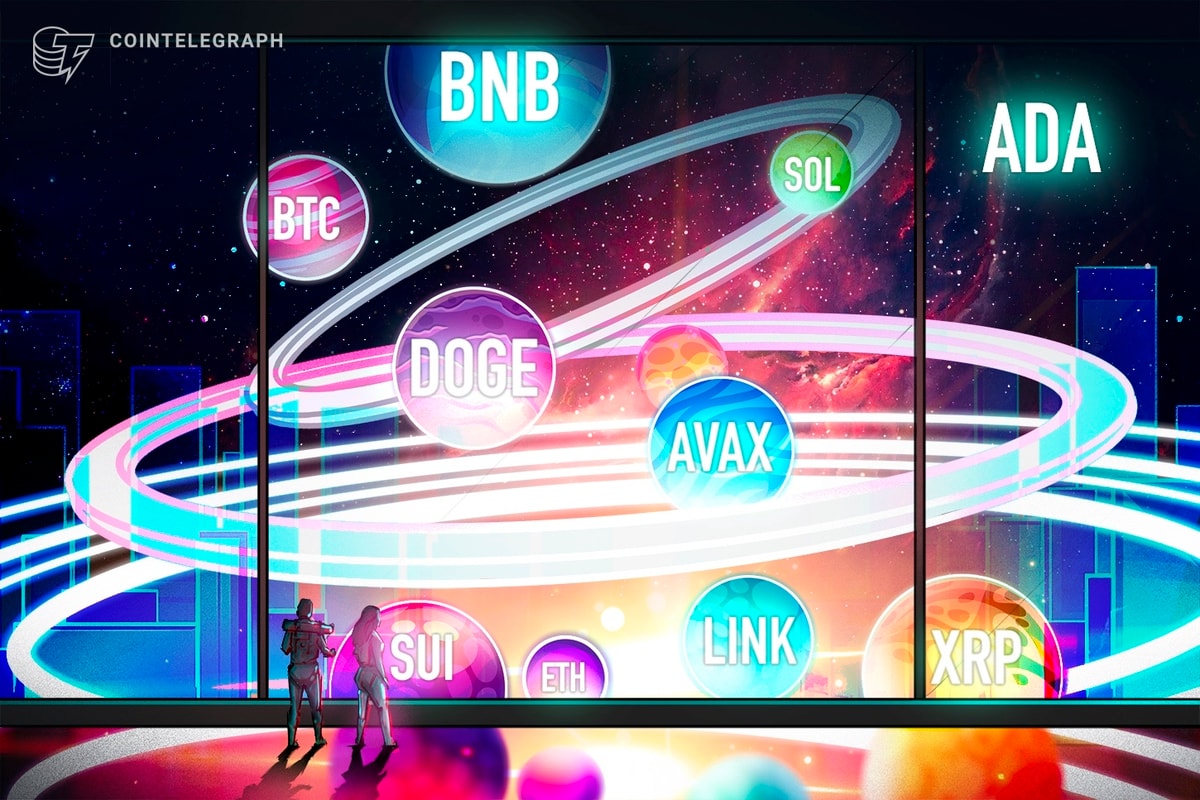
Ethereum has just announced its Ethereum Community Fund (ECF) grant program, an initiative launched by a collection of major players in the Ethereum world that is designed to accelerate the development of blockchain infrastructure apps and services. The stated aim of the ECF is to bring about “an environment where teams and ideas can thrive, grow, and collaborate to become essential and functioning pieces of the broader Ethereum ecosystem.”
All of this raises the question of what exactly we mean when we talk about “blockchain ecosystems” and how they are built. Well, here’s an analogy for you: blockchains are like roads.
Just as there’s no single type of road (regular highways, motorways, backcountry dirt tracks), there is no single type of blockchain. Each one is purpose-built for its own ends. Not only that, but roads have a system of independent elements that come together to enable the whole ecosystem to function smoothly and reliably: traffic lights, police enforcers, toll roads, gas stations and so on. So it is with blockchains.
When we talk about a “blockchain ecosystem,” we’re talking about the parts that constitute the whole, how they interact with each other and how they interact with the outside world.
The Bitcoin ecosystem, for example, boils down to four parts: the users sending and receiving payments, the miners generating the cryptocurrency, the investors buying it, and the developers that monitor and maintain the whole thing. No single part of the equation works without the others being there too.
In any event, a series of ingredients must work together well to keep a blockchain project operational. We’re going to take a look at the pieces that constitute four major blockchain projects that are up and running today.
Blockchain Projects
Despite the blockchain industry still being very young, we can already single out some major non-Bitcoin blockchain infrastructure projects: Ethereum, Waves, Stellar, NEO, NEM and a handful of others.
Ethereum was proposed by Vitalik Buterin in 2013, crowdfunded with 30,000 BTC in the summer of 2014 and launched a year later in 2015. Its core feature is “smart contracts,” which run automatically and exactly as coded, without any possibility of downtime.
Ethereum is not the only platform that uses smart contracts. NEO runs decentralized software in a manner similar to Ethereum, and in fact is trying to position itself as the “Chinese Ethereum.” The difference is that NEO apps are written in popular programming languages like Python, whilst Ethereum relies on its own custom Solidity language. Additionally, NEO lets users digitize certain assets and track them on its blockchain, making it simple to trade them as users see fit. If that sounds complicated, don’t worry — one Redditor with a computer science degree confessed even he has a hard time understanding it.
In contrast to Ethereum’s focus on the developer community, the Waves platform focuses on mass adoption. My vision, as founder, was to create a platform different from existing blockchains and more focused on real-world applications.
Products and services include a multi-currency wallet, the ability to raise funds for the development of projects through token issuance and an integrated decentralized exchange, none of which requires any expertise in blockchain technology to use. It is this ease of use and simplicity that Waves believes will benefit a wide range of businesses and so open up the blockchain economy for any organization of any size, in any sector.
Stellar is a blockchain-enabled payment network designed to move money across borders easily. This is facilitated by people voluntarily running Stellar servers on their computers, each containing a complete copy of the Stellar ledger and synchronized every two to five seconds. The more people running these nodes, the stronger the network becomes.
NEM is a blockchain platform for managing assets like currencies, supply chains, notarizations and ownership records. It found some mainstream success in late 2015 when a pair of Japanese banks began to implement it in their businesses. NEM’s ecosystem breaks down into two components: the nodes that make up the NEM Infrastructure Server (NIS) and the clients that interact with those nodes.
Exchanges and Token Launching Tools
Every blockchain project of note has a similarly robust ecosystem under its hood, and they almost always include a decentralized exchange. These might be developed by the core project team, the community or other developers.
Consider NEO’s NEX exchange, which merges blockchain with off-chain matching technology to complete complex trades quickly. Stellar’s SDEX exchange is designed to find the cheapest rates between any two digital assets, making it more affordable to trade crypto. EtherDelta is one of the decentralized exchanges used for trading Ethereum’s ERC20 tokens; it readily integrates with hardware wallets, or users can create a wallet directly on the site.
The Waves DEX platform uses centralized Matcher nodes to pair trades for speed, but features blockchain settlement — allowing near-real-time trading but strong security and user control of funds at all times. Waves also includes a Token Launcher, enabling users to issue tokens and then trade them immediately on the DEX. Waves additionally features a user-friendly front end, similar to existing centralized exchanges. Stellar’s SDEX also allows token creation.
Applications
Besides these exchanges and tools for token creation, another important element of the ecosystem is the applications that businesses, developers and communities can build on to create their own services and projects.
For example, the Ethereum white paper discusses three main types of applications: financial applications, so-called semi-financial applications and non-financial applications. The first category focuses on the way that money is managed and used, and includes sub-currencies, derivatives and even instruments like employment contracts.
The second category includes applications with a financial element but that go far beyond this, such as self-enforcing bounties for certain tasks. The final category might include applications such as voting and governance mechanisms.
As a further example, consider the prediction platform Stox, which lets users place bets on just about anything and win cryptocurrency for correct guesses. Other platforms have similarly diverse projects. Popular applications on NEO include Red Pulse and AdEx. On Waves there are Primalbase, OceanLab and MyTrackNet. Stellar has Smartlands, and so on.
In some cases, platforms aim to stimulate the development of applications through initiatives like Stellar’s Stellar Build Challenge and grant program. Waves promotes the same through the Waves Lab, a startup incubator that helps projects at the pre-ICO stage. NEM has its Blockchain Center in Malaysia that serves as an accelerator, incubator and coworking space. NEO has NGC (NEO Global Capital), which invests in upcoming projects that are beneficial to the NEO ecosystem. Developers have even taken their own initiative to create alliances like NEO’s City of Zion, which helps to build infrastructure projects for NEO. And recently, of course, we have seen the launch of the Ethereum Community Fund (ECF).
Businesses and Enterprises
In order to promote blockchain infrastructure, certain projects have set up enterprise initiatives that become an integral part of the ecosystem. For example, Ethereum already has its Enterprise Ethereum Alliance, an advocacy group that connects companies large and small with experts to help them find ways to leverage Ethereum’s powerful technology. It’s a strong community eager to share its resources and know-how.
As for Stellar, its ecosystem has two primary components: the people running Stellar nodes on their machines, and the anchors that facilitate the conversion of cryptocurrency to fiat currency. In practice, “anchors” can take the form of banks, savings institutions, farmers’ co-ops, central banks and remittance companies. These entities have to be trusted to hold users’ money and honor their withdrawals, but that trust enables you to use a balance of U.S. dollars to send rubles to a friend in Russia, for example.
Waves has Tokenomica, a kind of global, blockchain-hosted investment bank. It aims to provide token services to large corporations within a compliant regulatory framework, enabling businesses to launch their own token initiatives and conduct crowdsales whilst meeting all relevant Anti-Money Laundering (AML) and Know Your Customer (KYC) requirements. Tokenomica is expected to launch its first projects later in 2018 and build partnerships with regulators and banks over the coming months.
Also on Waves is the Basics Fund, a fund that consists of a portfolio of blockchain projects. The idea is to give institutional investors and high-net-worth individuals early-stage exposure to the sector. The money is also used to capitalize promising businesses seeking initial funding and going through the Waves Lab accelerator/incubator program. The Fund is currently collecting investment and will launch later this year.
Meanwhile NEM, in partnership with the Malaysia Digital Economy Corporation (MDEC), has launched a program in Malaysia that will provide tax exemptions, visas for foreigners, and support from both the private and public sectors to entrepreneurs in the industry. MDEC will act as a facilitator to develop enterprise solutions for the Malaysian economy.
Rounding It Up
Just as roads can take you to all different kinds of places, blockchains can be used for diverse ends. The path you take (and the blockchain project you participate in) depends entirely on where you want to go and what you want to do.
A robust blockchain ecosystem isn’t merely constructed from high-quality components, but from components that also work together harmoniously. If they don’t click and fire in sync, then you get the blockchain equivalent of a traffic jam.
And no matter what kind of road you’re on, traffic jams are no good.
This is a guest post by Sasha Ivanov, founder and CEO of the Waves Platform. The opinions express are his alone and do not necessarily reflect those of BTC Media or Bitcoin Magazine.









